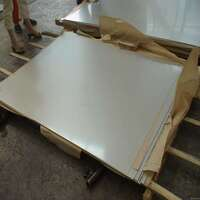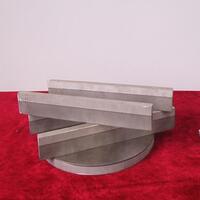1. Introduction
Thinking about upgrading your home’s exterior? Metal clad siding offers durability, modern aesthetics, and low maintenance—all while boosting curb appeal. Whether you’re drawn to the rustic charm of corten steel siding or the sleek look of a zinc facade, understanding how to properly install and maintain your metal clad wall is key to long-term performance.

From steel clad houses to metal clad sheds, this guide gives you actionable, step-by-step advice for a successful project—no matter your experience level.
2. Choose the Right Type of Metal Clad Siding
Not all clad metals are created equal. Your climate, budget, and design goals will influence your choice.
- Corten steel siding develops a protective rust patina and is ideal for modern or industrial looks—but check corten siding cost before committing.
- Zinc metal siding and zinc clad dormers offer self-healing properties and last 80+ years with minimal upkeep.
- Copper siding ages beautifully, turning from bright orange to a soft green over time.
- For budget-friendly options, consider exterior corrugated metal siding or colorbond standing seam panels.
- Aluminum clad steel and stainless clad aluminum combine strength with corrosion resistance—great for coastal areas.
3. Prepare the Wall Surface
Proper preparation prevents moisture buildup and ensures your metal clad wall stays secure for decades.
Remove old siding, inspect sheathing for rot or damage, and install a high-quality weather-resistant barrier (WRB). Use furring strips if you’re adding an air gap for ventilation—especially important for steel facade or corrugated steel facade installations.
Make sure the surface is level and plumb. Any irregularities will show through thin metal panels.
4. Install the Underlayment and Flashing
Don’t skip this step! A proper underlayment protects your structure from wind-driven rain and condensation.

Use a breathable house wrap compatible with metal cladding. Install drip edges, corner flashing, and window/door head flashing before panels go up.
For roofs or transitions, pac clad coping and pac clad column covers provide clean, watertight finishes.
5. Cut and Fit the Metal Panels
Use metal snips, a circular saw with a metal-cutting blade, or a shear for clean cuts. Always wear safety goggles and gloves.
Measure twice—metal sheet cutting mistakes are costly. Leave expansion gaps (typically 1/8 inch) at joints to accommodate thermal movement, especially with aluminum clad sheet or stainless steel metal plate.
For vertical standing seam metal siding, align panels carefully to maintain consistent seam spacing.
6. Fasten the Panels Correctly
Use corrosion-resistant fasteners designed for your specific metal type (e.g., stainless steel screws for zinc or copper).
Drive fasteners into the flat part of corrugated panels—not the crest—to avoid leaks.
For standing seam systems like pac clad standing seam roof or colorbond standing seam, use hidden clips to allow for expansion and prevent oil-canning (waviness).

Never over-tighten—this can distort the metal or compromise the finish.
7. Seal and Finish Edges
Cap exposed edges with trim made from matching materials—like pac clad hwp for horizontal applications or pac clad column covers for corners.
Seal penetrations (vents, outlets) with compatible metal or rubber boots. Avoid silicone; use butyl or polyurethane sealants rated for metal cladding.
8. Maintain Your Metal Clad Exterior
Metal clad siding is low-maintenance, but not zero-maintenance.
- Rinse with water annually to remove dirt, pollen, or salt buildup.
- Inspect fasteners and seams every 2–3 years for loosening or corrosion.
- For corten steel siding, avoid power washing—it can strip the protective patina.
- Touch up scratches on painted systems (like Colorbond) with matching touch-up paint to prevent rust.
If you notice white powdery deposits on aluminum, it’s oxidation—clean with a mild acid solution (like vinegar) and rinse thoroughly.
9. Troubleshoot Common Problems
Even the best-installed metal clad wall can face issues:
- Oil-canning: Caused by improper fastening or panel stress. Use stiffeners or choose thicker gauge metal.
- Condensation behind panels: Ensure proper ventilation and vapor barriers.
- Galvanic corrosion: Never directly join dissimilar metals (e.g., copper and steel). Use isolation tapes or compatible transition strips.
- Noise during rain: Add insulation like metal clad insulation or a sound-dampening underlayment beneath the panels.
10. Conclusion
Installing metal clad siding is a smart investment that blends style, sustainability, and strength. Whether you’re building a steel clad house, updating a metal clad shed, or adding a zinc clad roof, following these steps ensures a professional-looking, long-lasting result.
Remember: the key to success lies in choosing the right clad metal meaning for your needs, preparing thoroughly, and maintaining your system over time. With proper care, your metal clad building will stand proud for generations.
Our Website founded on October 17, 2012, is a high-tech enterprise committed to the research and development, production, processing, sales and technical services of ceramic relative materials such as How. Our products includes but not limited to Boron Carbide Ceramic Products, Boron Nitride Ceramic Products, Silicon Carbide Ceramic Products, Silicon Nitride Ceramic Products, Zirconium Dioxide Ceramic Products, etc. If you are interested, please feel free to contact us.
